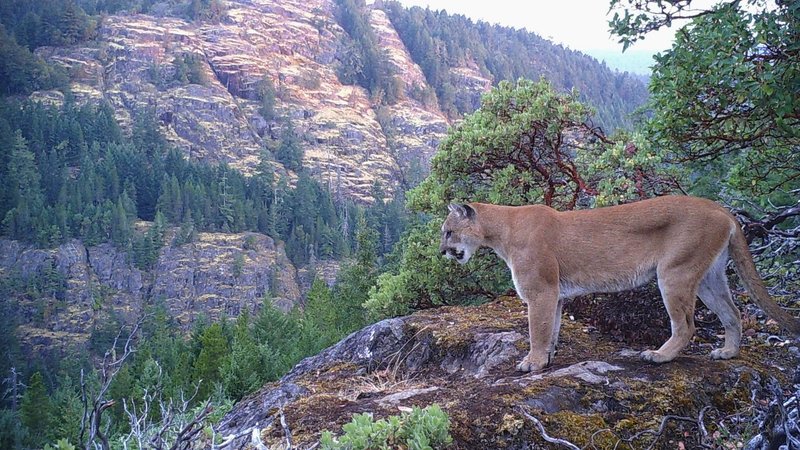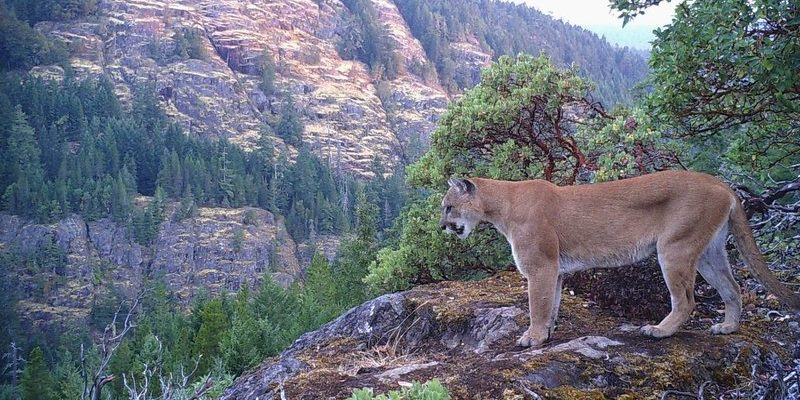
Cougars, also known as mountain lions or pumas, are stealthy predators found in North and South America. While they typically avoid humans, their natural instincts can kick in if they feel threatened or are cornered. Fear not, though! Understanding some simple guidelines can help you stay safe and calm. Let’s dive into how to prepare for and respond to a cougar encounter.
Recognizing Cougar Behavior
Understanding cougar behavior can give you a leg up if you ever cross paths with one. Generally, cougars are solitary animals that prefer to keep to themselves. They typically hunt at dawn or dusk and are most active during these twilight hours. While they might appear majestic and regal, you should approach them with caution.
If you see a cougar, take note of its body language. A relaxed cougar might just look at you curiously. However, if the animal appears tense or agitated—ears back, tail twitching—you should be on high alert. You might be wondering how to distinguish a curious cat from a potentially aggressive one. Here’s the thing: if it seems to fixate on you while showing signs of aggression, it’s time to act.
Think of cougars like oversized house cats. When a domestic cat feels threatened, it might puff up or hiss. Similarly, a cougar will display these subtle signs before deciding whether to attack or flee. Recognizing these behaviors can help you stay one step ahead in a tense situation.
Stay Calm and Assess the Situation
If you spot a cougar, it’s essential to stay calm. Easier said than done, right? The first step is to assess the situation without making any sudden movements. Take a deep breath and remind yourself that cougars usually prefer to avoid humans.
Stand your ground. Don’t run. Running can trigger a cougar’s instinct to chase, and you absolutely don’t want that. Instead, maintain eye contact with the animal. Cougars often prefer creatures that show signs of weakness, so appearing confident can help dissuade the cat from approaching.
If the cougar starts to come closer, it’s time to prepare yourself. Look for any nearby objects you could use for protection, like a walking stick or backpack. But remember, your main goal is to *de-escalate* the situation. You don’t want to provoke the cougar further.
Make Yourself Look Bigger
When faced with a cougar, making yourself look bigger can help deter the animal from approaching. Raise your arms and spread out your jacket, or hold your backpack above your head. You want to project the image of a formidable opponent, not an easy target.
Try to make yourself appear taller than you are. You might feel a bit silly waving your arms around, but it can be effective. Cougars instinctively assess their targets, and if they see you as a potential threat, they might back off.
You can also make noise—clap your hands, shout loudly, or use any available tools like a whistle or air horn. This not only serves to scare the cougar but also alerts others nearby. Just remember to be assertive; a confident demeanor can send the message that you’re not easy prey.
Back Away Slowly
Once you’ve assessed the situation and made yourself look bigger, it’s time to back away slowly. This isn’t the moment for quick movements or sudden turns. Keep your eyes on the cougar as you step backward, maintaining a confident posture.
Moving slowly allows the cougar to recognize that you’re not a threat but also gives it a chance to lose interest in you. If it follows you, don’t panic! Keep moving slowly and steadily until you’ve put some distance between yourself and the cougar.
Cougars are more likely to leave you alone if they sense that you’re more cautious than desperate. Once you feel safe, find a spot with other people or a secure area, and stay vigilant.
When a Cougar Attacks
While rare, a cougar attack can happen. If you find yourself in that situation, your response should be fierce. Fight back! Use whatever you have—rocks, sticks, or even your fists. Aim for the cougar’s face and eyes; these are vulnerable spots. Yelling loudly can also help scare it off, as cougars prefer to avoid confrontation when possible.
Here’s a startling fact: many attacks happen when people are hiking alone or with smaller groups. Therefore, it’s safer to travel in larger groups whenever possible. If you’re hiking with friends, have a plan in mind about what to do if a cougar appears. Discussing this ahead of time can keep your group prepared and calm.
Also, remember that cougars tend to target smaller animals. If you’re hiking with a pet, keep it on a leash. Small dogs and cats can attract cougars, putting you and your pet in danger.
Preventing Cougar Encounters
Prevention is always better than a cure, especially in the wild. Here are some steps you can take to reduce the risk of encountering a cougar:
- Stay in groups while hiking.
- Make noise to alert wildlife to your presence.
- Avoid hiking during dawn and dusk—the peak activity times for cougars.
- Be aware of your surroundings; look for signs of wildlife activity.
- Keep pets leashed and supervised.
By following these simple prevention tips, you can minimize the chances of a surprise encounter with a cougar. Safety in numbers and awareness can go a long way in keeping both you and the wildlife around you safe.
Encountering a cougar in the wild can be a heart-pounding experience, but knowing what to do can help you navigate the situation safely. Remember to stay calm, assess the behavior of the cougar, and make yourself look bigger. Back away slowly, and should the rare event of an attack occur, fight back with everything you’ve got.
Most importantly, prevention is key. Traveling in groups, being aware of your surroundings, and keeping your pets safe can go a long way in ensuring you have a fun, wildlife-filled adventure without any unexpected surprises. Stay safe out there, and enjoy the beauty of nature!

